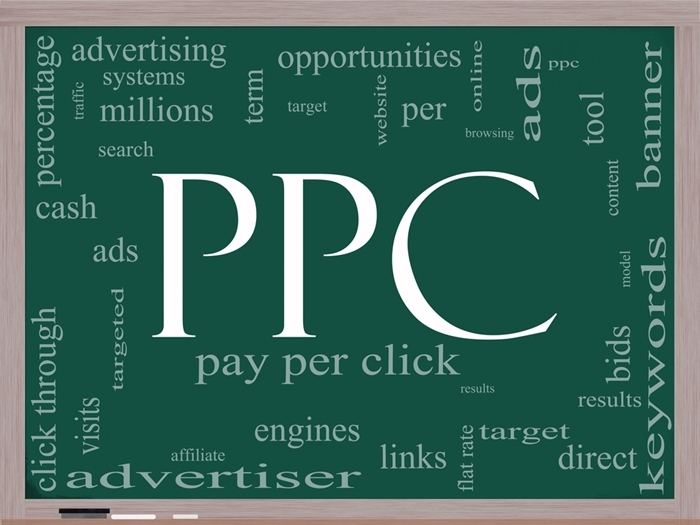 Content Marketing Institute (CMI) held their Content Marketing Master Class conference at the Sir Francis Drake Hotel in San Francisco on December 4. Prestige’s resident Content Specialist, Echo Quan, was in attendance to hear speaker and Chief Strategy Officer Robert Rose talk about Content Marketing in the context of the evolution of marketing.
Content Marketing Institute (CMI) held their Content Marketing Master Class conference at the Sir Francis Drake Hotel in San Francisco on December 4. Prestige’s resident Content Specialist, Echo Quan, was in attendance to hear speaker and Chief Strategy Officer Robert Rose talk about Content Marketing in the context of the evolution of marketing.
Prestige’s Takeaways
1) Value over Information A great question that Rose presented was about the value we offer, and the value our customers are looking for. When we look at our homepage content, is what we see informational content or content of value to the customer? Since our site’s homepage is often the target audience’s first interaction with our company, or is their first online reference to us, that we should use it to show that we are of value of them. It is your first and possibly only chance to deliver an excellent experience. You could have featured webinars, videos or educational content. Rather, company homepages often center on information about who, what and why about ourselves rather than the customer, leaving it up to the visitor to draw their own connections. Focus your content to send a message: target upper management, present thought leadership, and remember: “Differentiate means telling a different story, not the same one incrementally better.”
2) Your Real Competition Rose suggests that our real competition is not our direct competition. In fact, he claims that our target audience doesn’t even see our direct competitors as our competition. If what we are competing for is our existing and future customer’s attention, then Rose is arguing that the context of attention isn’t just confined to marketing needs. Whatever people are giving their time and energy to is your competition. Even deeper, what people care about is your competition. Sure, when it comes down to choosing marketing services, of course your customer has to pick between you and other marketing firms. But contemporary consumers have different standards of loyalty and relationship. If you are only a product or service, that in itself is not a hold on your customers because what they care about is not a product or service. The underlying motivation is that they care about the success of their role or company. For example, if your ideal customer is management of medium or larger sized firms, they are looking to get ahead of the competition and CIOs are en route to a career as a CFO. To give specific value, you could create content like an e-book or webinar series such as “The New Voice of the CIO.” This is content that makes you valuable to your target audience and sets you apart.
 More than half of adults use their phones to surf the Web, the Pew Research Center reported – a trend that will continue throughout 2015. That amounts to a lot more clicks and impressions available to marketers, many of whom are already using the pay-per-click model to target users of cell phones, iPads and other mobile devices.
More than half of adults use their phones to surf the Web, the Pew Research Center reported – a trend that will continue throughout 2015. That amounts to a lot more clicks and impressions available to marketers, many of whom are already using the pay-per-click model to target users of cell phones, iPads and other mobile devices.
 Remember when purchasers paid marketers regardless of whether they were able to track and measure just how effective their campaigns were? How times have changed. With the introduction of each new measuring device, it seems, comes more pressure for marketers to whip up results. The fact that most Internet ad revenue in the U.S. is now comprised of performance-based advertising only highlights this fact.
Remember when purchasers paid marketers regardless of whether they were able to track and measure just how effective their campaigns were? How times have changed. With the introduction of each new measuring device, it seems, comes more pressure for marketers to whip up results. The fact that most Internet ad revenue in the U.S. is now comprised of performance-based advertising only highlights this fact. Marketing is consistently becoming more personalized and targeted, focusing on smaller groups of relevant prospects instead of a single, large audience. Marketers need to focus on building closer, emotional connections with their customers to increase satisfaction, retention and revenue.
Marketing is consistently becoming more personalized and targeted, focusing on smaller groups of relevant prospects instead of a single, large audience. Marketers need to focus on building closer, emotional connections with their customers to increase satisfaction, retention and revenue. Customers are more tech-savvy than ever before, and marketers have a huge arsenal of tools available for lead generation. However, consumers’ demands are growing more sophisticated. They want personalized marketing content and to be able to interact with a brand through whichever channel they choose. Using data to refine your marketing efforts improves your ability to maintain engagement with current and potential clients. Data-driven marketing created a
Customers are more tech-savvy than ever before, and marketers have a huge arsenal of tools available for lead generation. However, consumers’ demands are growing more sophisticated. They want personalized marketing content and to be able to interact with a brand through whichever channel they choose. Using data to refine your marketing efforts improves your ability to maintain engagement with current and potential clients. Data-driven marketing created a  In the past, it was notoriously difficult to measure return on investment from online marketing efforts. Today, getting a handle on ROI tracking is more important than ever because marketers are expected to increase their budgets for
In the past, it was notoriously difficult to measure return on investment from online marketing efforts. Today, getting a handle on ROI tracking is more important than ever because marketers are expected to increase their budgets for 
 2014 is quickly coming to a close, which means it’s already time to consider marketing plans for 2015. Marketing is consistently getting more personalized and happens across a larger number of channels, and this is expected to continue next year. Here are the top 7 trends marketers and advertising agencies need to be aware of in the next 12 months:
2014 is quickly coming to a close, which means it’s already time to consider marketing plans for 2015. Marketing is consistently getting more personalized and happens across a larger number of channels, and this is expected to continue next year. Here are the top 7 trends marketers and advertising agencies need to be aware of in the next 12 months: Content Marketing Institute (CMI) held their Content Marketing Master Class conference at the Sir Francis Drake Hotel in San Francisco on December 4. Prestige’s resident Content Specialist, Echo Quan, was in attendance to hear speaker and Chief Strategy Officer Robert Rose talk about Content Marketing in the context of the evolution of marketing.
Content Marketing Institute (CMI) held their Content Marketing Master Class conference at the Sir Francis Drake Hotel in San Francisco on December 4. Prestige’s resident Content Specialist, Echo Quan, was in attendance to hear speaker and Chief Strategy Officer Robert Rose talk about Content Marketing in the context of the evolution of marketing.
 Big data is no longer a marketing buzzword; it’s an industry mainstay. In today’s digital age, businesses are trying to leverage mass quantities of collected information to their advantage by identifying their customers’ behavioral and buying trends.
Big data is no longer a marketing buzzword; it’s an industry mainstay. In today’s digital age, businesses are trying to leverage mass quantities of collected information to their advantage by identifying their customers’ behavioral and buying trends.